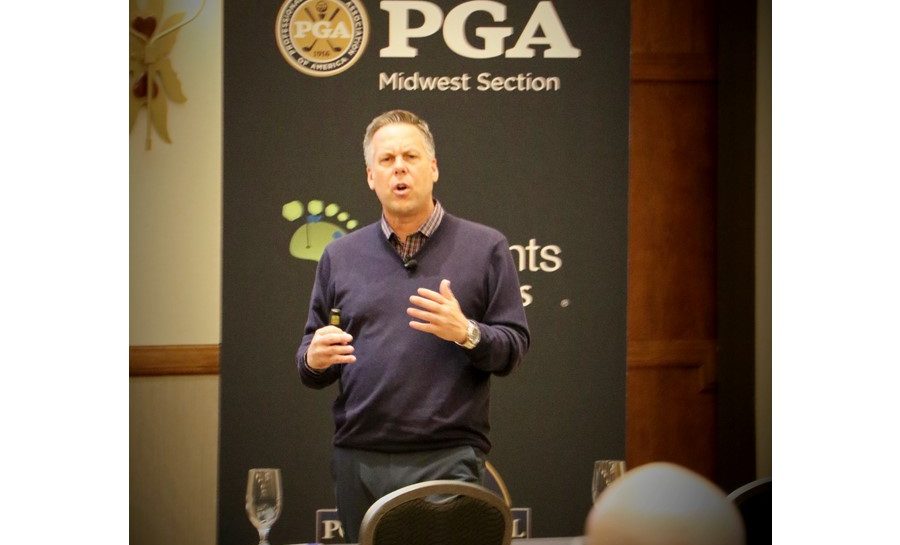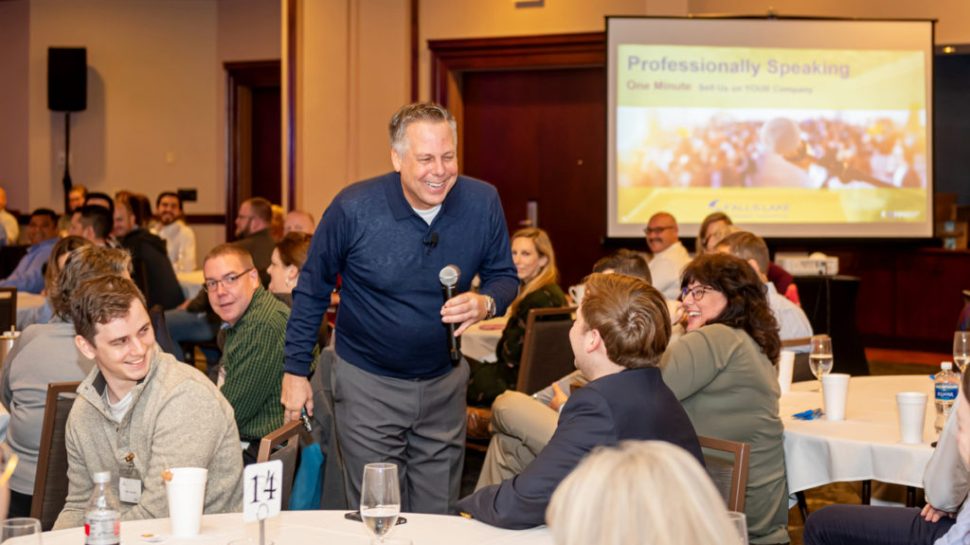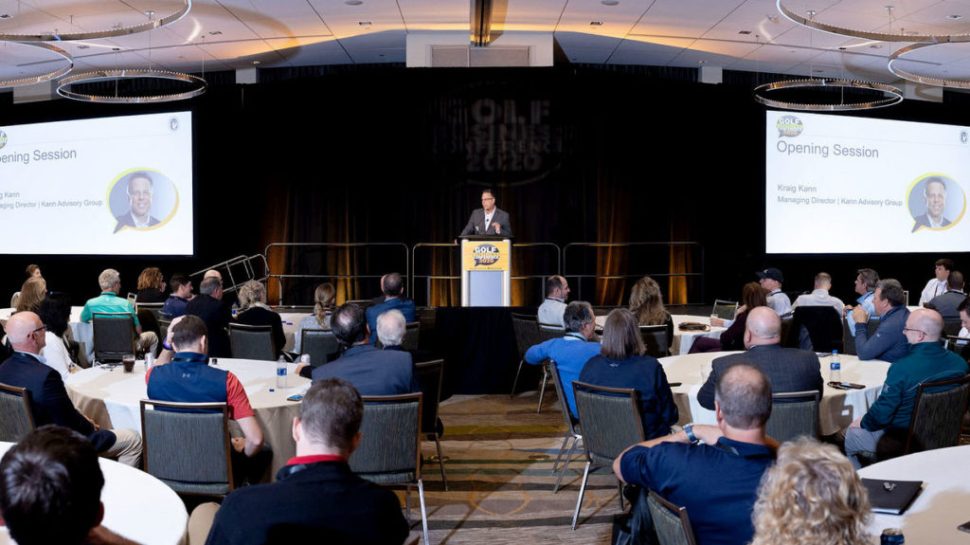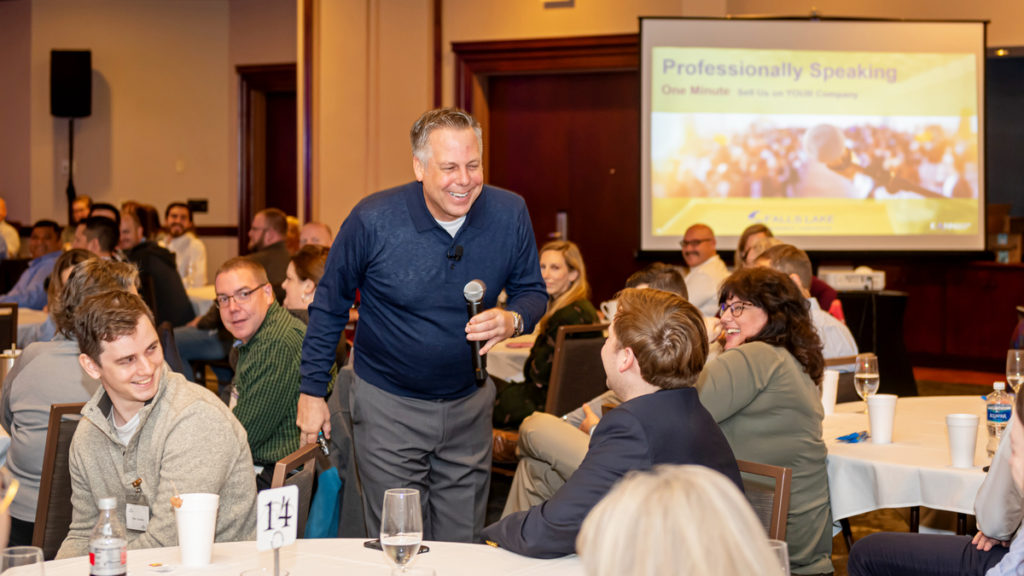Backgrounder —
Perhaps best recognized from a 25-year television career that included 17 at Golf Channel/NBC where he was an original on-air member, a play-by-play voice and ultimately the lead studio host and on-site anchor at major championship events around the world, Kraig Kann took hold of an opportunity, made a career pivot and elevated the Ladies Professional Golf Association as its Chief Communications Officer from 2011-2016.

As its founder and managing director, today, Kraig now leads Kann Advisory Group where he consults with clients seeking winning communication, brand marketing and media strategies.
His vast experience combining roles as a network television and radio personality, sports executive and business entrepreneur has made him an industry influencer, respected spokesperson, renowned leadership workshop facilitator and requested speaker.
The Kann Story —
From my earliest days being introduced to the game from my grandfather and my Dad, I found golf to be the perfect mix of a sporting challenge, a place to connect with friends and professionals, and an amazing landing spot to play out a childhood dream of being a network broadcaster.
As one of The Golf Channel’s original personalities, I’ve been blessed with a worldwide stage to promote a sport filled with talented athletes inside the ropes while interacting with impressive executives from a corporate world that cherishes the game and its values just the same. Along the way, I’ve been able to help build the brands of a network devoted to golf, an organization (the LPGA) with rich history within the sport, and many associations seeking greater awareness through the game itself.
Have you ever wanted to be in complete control speaking in front of an audience? You can do it! Read my blog:https://t.co/RwxeYdC1N7 pic.twitter.com/7thns30gVc
— Kraig Kann 🏔 (@KraigKann) June 25, 2018
To this day, I count myself blessed for the opportunity to have had a voice, a degree of influence, and a platform to lead the game forward – supporting the game’s greatest stars, events and stakeholders for today’s generation and generations to come. My goal has never been to make a paycheck, but instead to make a difference. I’d like to think my efforts have done that.
***
You wake up in the morning — what’s the driving passion?
To find my next opportunity and make the most of the one that is currently in front of me.
You are actively involved in providing presentations to various golf companies — what’s the nature of your involvement and how successful have your efforts been to date?
Be it consulting opportunities to assist with brand development and strategic communication, leadership workshops designed to elevate employees with skills to present and sell themselves as never before, or keynotes designed to inspire and empower, I’ve had many opportunities to make an impact on people and their organizations.
My background as a recognizable face has helped me connect and entertain and each opportunity has given me a chance to grow my following and generate more opportunities. I’m proud of the testimonials that have come my way and the goal is to give people more than they expected when they hired me in the first place.

Communication skills are often championed but more often not carried out effectively. Why is that?
Often times, people don’t start with the end game in mind. Communication is the link between ideas and action. Before we write or speak or present, we need to think about what we want the outcome to be. What will they think? What will they say? How do we want them to feel? That is where our message begins.
The desire to engage Millennials is one sought by many key companies / facilities in golf. In your estimation — what’s not being done that should be done to capture their attention and involvement with the sport?
We need to live where they live. Day to day activities for millennials are different. Time spent is different, attention spans are different and entertainment is different. That’s fact. Promoting the merits of the sport and showcasing millennials involvement in the sport on social media platforms or using golf courses as hubs for their entertainment are just a few concepts. My biggest advice is to allow millennials who play and who don’t play to be involved in ideation and strategic initiatives. Make them part of the process.

How does golf succeed in fostering interest among women and minorities?
Golf has made huge strides in engaging women and minorities to the sport. The LPGA in particular has made it a focal point to reach out to young girls, grabbing their attention at an early age. The LPGA-USGA Girls Golf program has grown immensely. The First Tee does the same. The key is not just recruitment but retainment. We have to give people a reason to stay and show them the long-term value in recreation, business and social connection that comes with involvement.
Plenty of participants in the golf industry speak about the importance of customer service but often fail in their attempt. Define the term and the approach those in the industry should follow when doing so.
Customer service means serving your customer. Simple. Role reversal is the approach I’ve heard and bought into. The industry needs to switch its focus from what it thinks people need to what people are willing to consume. In other words, not “here’s our menu, eat off it.” That doesn’t work. The menu should be filled (adjusted0 with the customer’s needs at the forefront.
How good an effort do the major golf associations do in their overall communications? Is there anyone that stands apart — both positively and less so?
I’m bullish on the LPGA approach obviously. Humanizing the product and the players and allowing them to be storytellers is been effective. They just don’t have the platform size that the PGA TOUR does. The PGA TOUR has done great work engaging a younger audience. The PGA of America has invested greatly and it shows. They do a terrific job of getting their message and programs to the masses.
The USGA has struggled in my opinion, using only their championships platform to push out their initiatives. That said, they’ve made strategic hires in the last few years to better communicate with players and fans. I think everyone realizes the need to get better. Getting better means taking good ideas and making them look great. It all begins with ideation and then you have to have more people involved in pushing out the message. It can’t just be the CEO’s or heads of the organization. Everyone needs to know the message and be able to promote it. And when media opportunities come, you’d better be able to deliver on your message, not just answer the questions coming your way.
You’re quoted as saying, “I don’t ever ‘just give a talk — I want them to walk away having had a transformative experience.” Please explain what you mean?
There are a lot of people who talk. There are very few who actually say something. To me, talking means presenting. And presenting means “connecting.” Do I share information? Yes. But I make it my goal to engage and connect with the audience so that they’ll actually consume and remember what I’m presenting. Every talk I give involves interaction with the audience and I have a strategy that helps keep them locked in from the beginning to the end. It’s all about making people remember what they’re supposed to remember and making them feel emotionally charged to go share with someone else. That’s how you build a following.
If you could change one thing in golf unilaterally — what would it be and why?
For the next 5 years, an initiative to design and build 3-hole courses with a par 3, par 4 and par 5. This would allow people a one-hour experience that I feel would be more realistic than Top Golf to introduce, engage and teach the game to beginners. On-course instruction would be a part of it. I have the whole concept baked in my head. I’ll leave it at that. Want to partner?

What’s the biggest challenges facing golf — short and long term — and how do you see the sport faring?
To me, it’s a couple tings. And it’s not about equipment, it’s about engagement. Number one is retaining the people currently playing the game. People’s time commitment has shrunk. How do we keep people playing? Can we give people reason to stay when the round is done? Is there enough going on at the course to give family members an opportunity to join in when the round is done?
Secondly, its about the long-term narrative of the game. Newspapers are shrinking and publications are vanishing. The number of golf storytellers is dwindling. The annual Golf Writers Association (GWAA) dinner in Augusta has had the same faces for years. Who Is the next generation and how do we recruit them and give them incentive to promote the sport? To me, that’s as important as anything else.
***
For more info go to:
